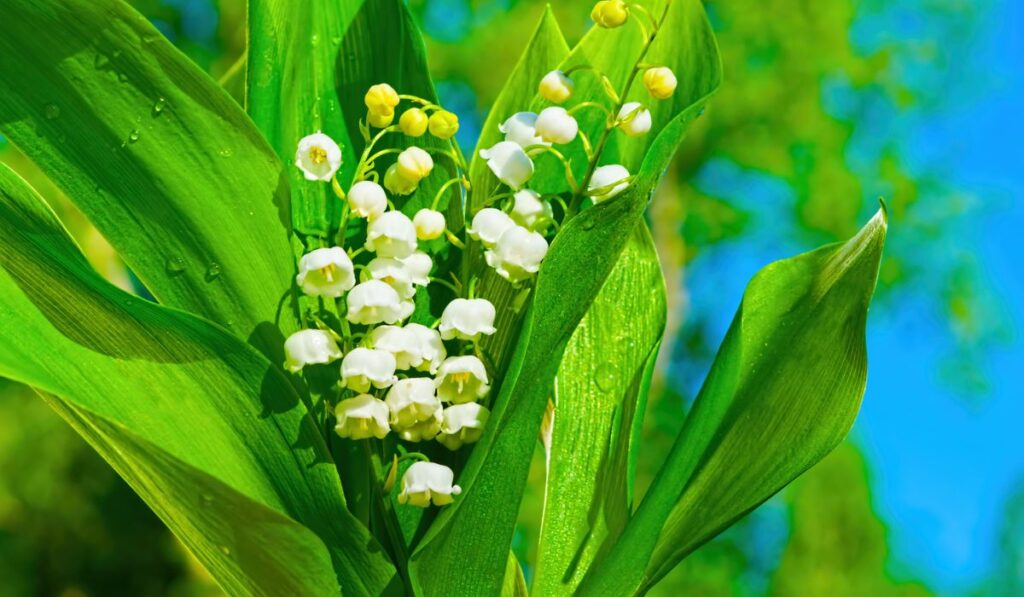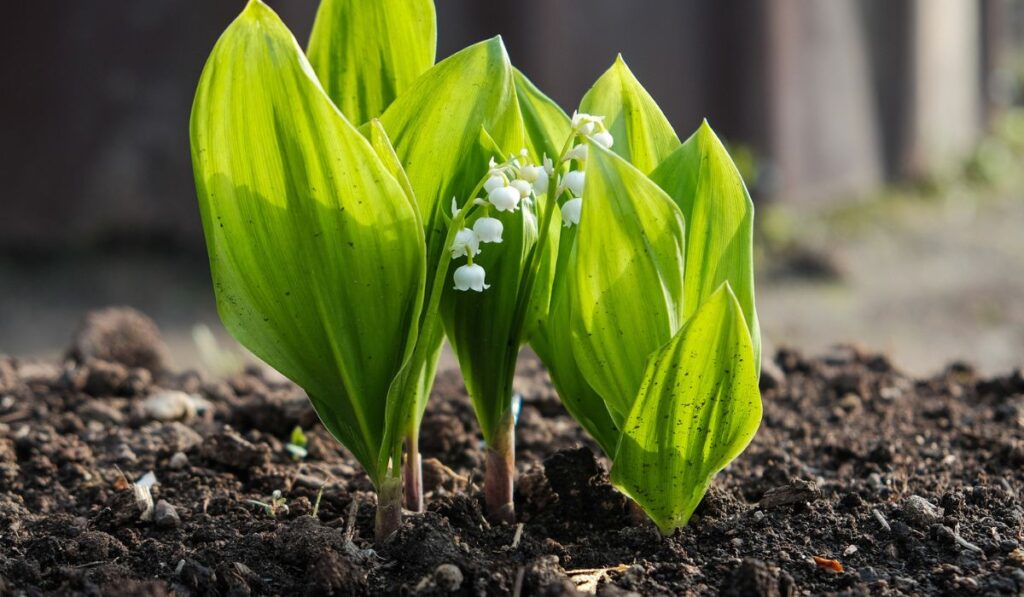Lily of the Valley is an old-fashioned favorite that deserves a place in any shade garden. With its dainty, bell-shaped flowers and sweet fragrance, it’s no wonder this plant has been cherished for centuries. But it’s not just its beauty that makes this plant so special. It’s also incredibly easy to grow and care for, making it a great choice for even the novice gardener. So, when should you plant Lily of the Valley?
The best time to plant Lily of the Valley is in the fall, between September and November. The plant spends the cooler months in dormancy and then comes to full bloom in the spring. Spring planting is also possible, but the plant may not flower the first year in that case.
Lily of the valley may appear to be delicate and high-maintenance, but, in fact, it’s quite a tough plant. In the right conditions, it will thrive and can quickly brighten up any shady space in your garden. While its needs are modest, it’s still important to meet them to ensure a healthy plant. Let’s look at what a Lily of the Valley needs and how you can provide it.
Best Months for Planting Lily of the Valley

Lily of the Valley (Convallaria majalis) is planted in late fall before the plant goes dormant for the winter. In general, anywhere from late September to early November is an ideal time to plant Lily of the Valley, depending on your exact location and the local climate.
You can also grow the Lily of the Valley (on Amazon) in early spring, but it isn’t guaranteed to blossom in the first season when you do so. That’s because it needs a cold snap (called vernalization) in order to produce flowers. For this reason, fall is considered the best time to plant.
If you’re propagating from existing “pips” of Lily of the Valley, do so after the flowering season is over. Again, fall is the best time for this.
How to Plant Lily of the Valley
First, choose a shady spot in your garden that only gets dappled sunlight at best. The plant prefers moist, humus-rich soil that is well drained. If your garden soil is heavy clay, it’s best to amend it with some organic material before planting.
- When planting, dig holes large enough to accommodate a full “pip” (the name given to the Lily of the Valley bulb).
- Before planting, snip an inch off the bottom of the pips. This will encourage water absorption.
- Place each pip in its own hole, pointed end up.
- Cover the pips with soil, with the top of the bulb about half an inch below the soil surface.
- If planting several pips, space them about 4-5 inches apart.
- Water the newly planted pips well.
Lily of the Valley is spread by stolons (above-ground runners) and can quickly fill an area. So if you want to keep them contained without much effort, it’s best to plant them in a container.
Are Lily of the Valley High Maintenance?
Lily of the Valley is not a high-maintenance plant. In fact, it’s quite easy to care for.
Once they’re established, the only real care they need is supplemental watering during prolonged dry spells — they don’t like to dry out.
Other than that, they don’t need to be fertilized or otherwise babied. Even regular pruning isn’t necessary, although you may want to do so to keep the plants tidy and contained.
Lily of the Valley Growing Tips

- Lily of the Valley is a shade-loving plant. So if you live in an area with hot summers, they’re a great choice for ground cover under trees.
- Under ideal conditions, Lily of the Valley will naturalize and spread. If you want to keep it contained, plant it in a pot or choose a bordered area.
- Well-drained soil is critical for Lily of the Valley. If your garden has heavy clay soil, it’s best to amend it before planting.
- Divide the plant in late fall or winter when it’s dormant.
- Plant the pips within ten days of dividing them. Soak the pips in water for a few minutes before planting to encourage absorption.
- Don’t prune the plant after flowering; the green foliage is important to conserve energy for winter dormancy.
- All the parts of Lily of the valley are poisonous, both to humans and animals, so take care if you have small children or pets — especially when it produces red berries since they can be tempting to kids.
- You can cut the flowers when buds are still closed; Lily of the valley is used in small bouquets and vase displays. The flowers are fragrant and can last for a week if kept in water.
- Lily of the valley is fairly resistant to pests and disease, but slugs and weevils can be a problem. Check the plant regularly and remove any pests you find.
